"Aerographers work included measuring, transmitting, and recording six types of weather observations. These weather observations included hourly, synoptic, ship report, pilot balloons, radiosonde, and pilot reports. Aerographers worked with a variety of instruments to gather necessary information." From: Flying Fighting Weatherman of Patrol Wing Four,
by Paul E. Carrigan, Aerographer's Mate, 1942-1943 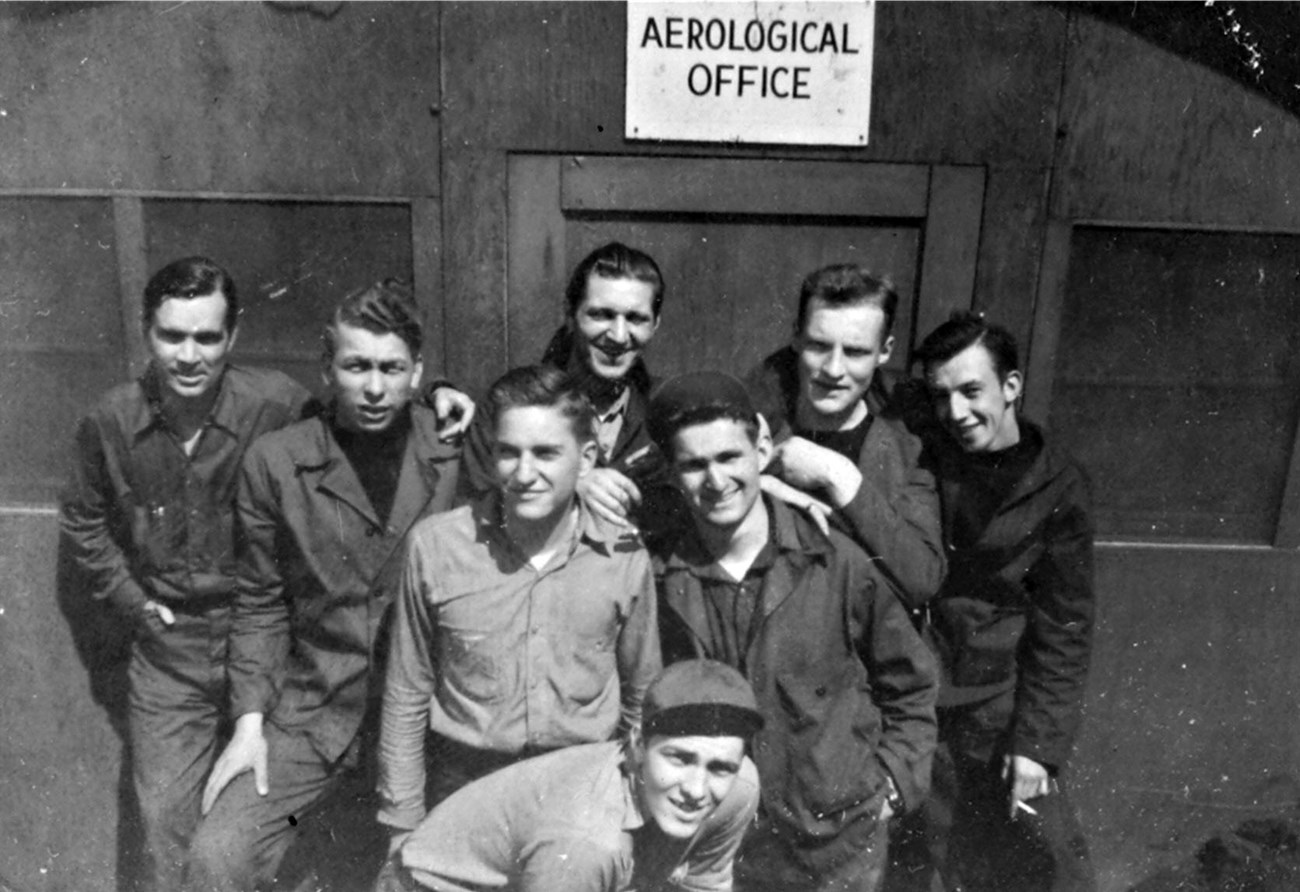
Courtesy Walter Andersen, Aerographer’s Mate, 2nd Class, US Navy, Circa 1943-1945. 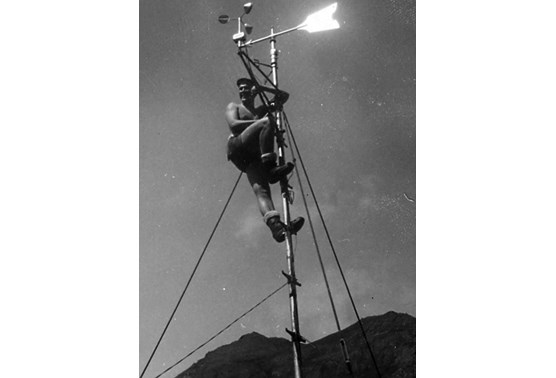
Courtesy Walter Andersen, Aerographer’s Mate, 2nd Class, US Navy, Circa 1943-1945. 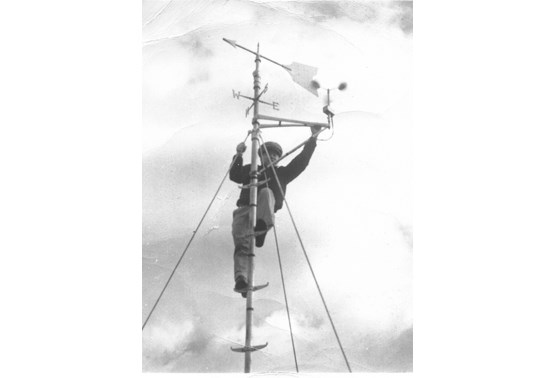
Courtesy Ralph Carrigan, brother of Paul E. Carrigan, Aerographer’s Mate 2nd Class, US Navy, Circa 1942-1943. 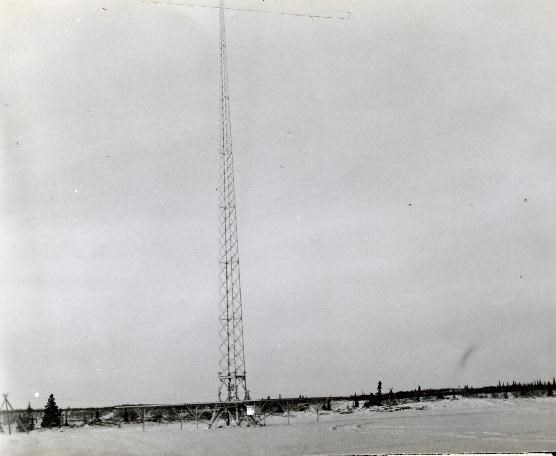
Photo courtesy of Mark S. Cramer, MD, FAAFP, San Diego, CA, from the collection of Marco James Cramer, Ph. D., Lt., US Army Air Corps (Air Force) 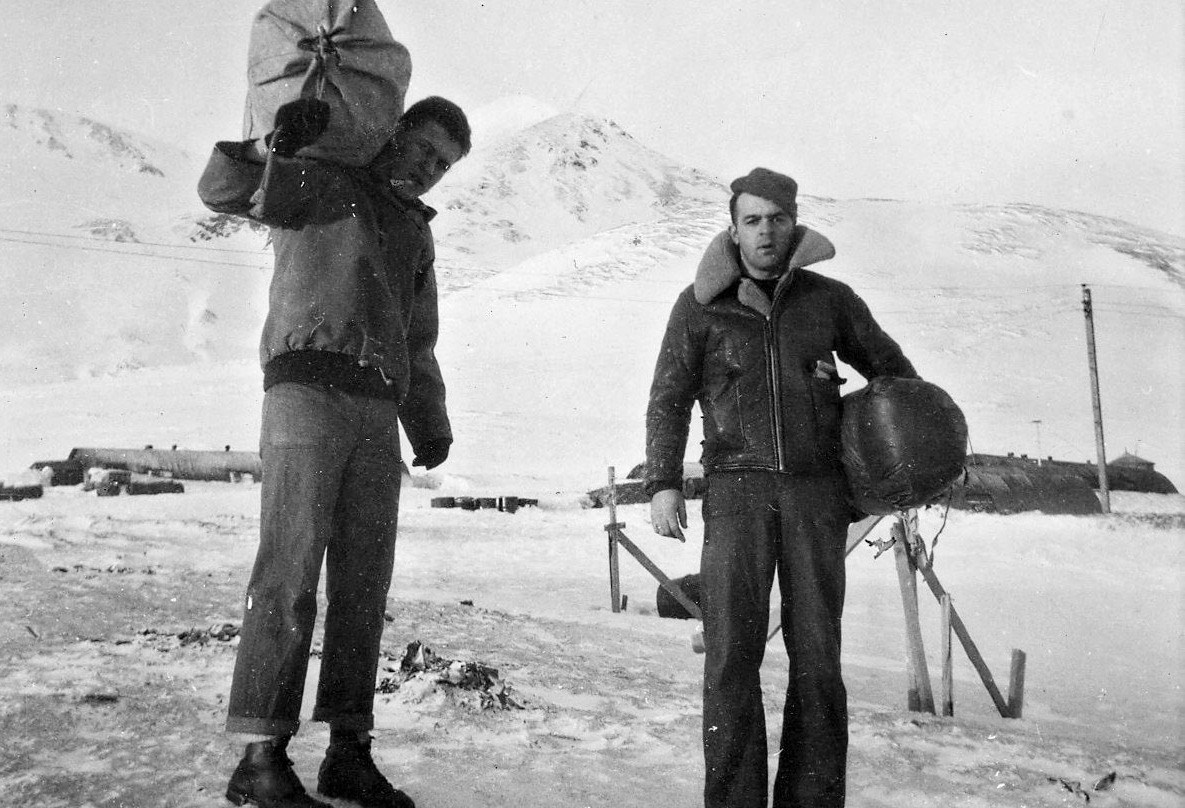
Courtesy Walter Andersen, Aerographer’s Mate, 2nd Class, US Navy, Circa 1943-1945 "Then another time in a snow storm ... the radioman on duty in the middle of the night, he makes a ... encodes a message and he calls and he says, 'Hey, I've got an urgent message coming in we better decode it.' So the guy in charge, he says ... 'Enemy attack or abandon your base immediately, enemy attack imminent.' And it is snowing like you can't believe. We got all gear in our backpacks and we started out the door and we hadn't gone more than 25 yards and this guy started to laugh. He thought it was pretty funny." Walter "Andy" Andersen, Aerographer's Mate, 1943-1945
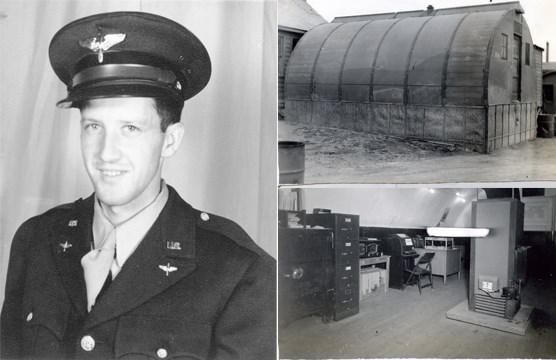
Top right: Lieutenant Marco Cramer’s work office. Bottom right: The inside of Marco Cramer and his crewmembers work room. Shown in the photo is a safe, files, radio, teletype paper under the radio, teletype, desks, and stove. Photo courtesy of Mark S. Cramer, MD, FAAFP, San Diego, CA, from the collection of Marco James Cramer, Ph. D., Lt., US Army Air Corps (Air Force), "But anyhow, that was a big day. We had ... they had beer - truckloads of beer - so we went back in a little gully and we had a picnic back there... I was on Attu. The officers got beer for us. We had really good officers, too." Walter "Andy" Andersen, Aerographer's Mate, 1943-1945
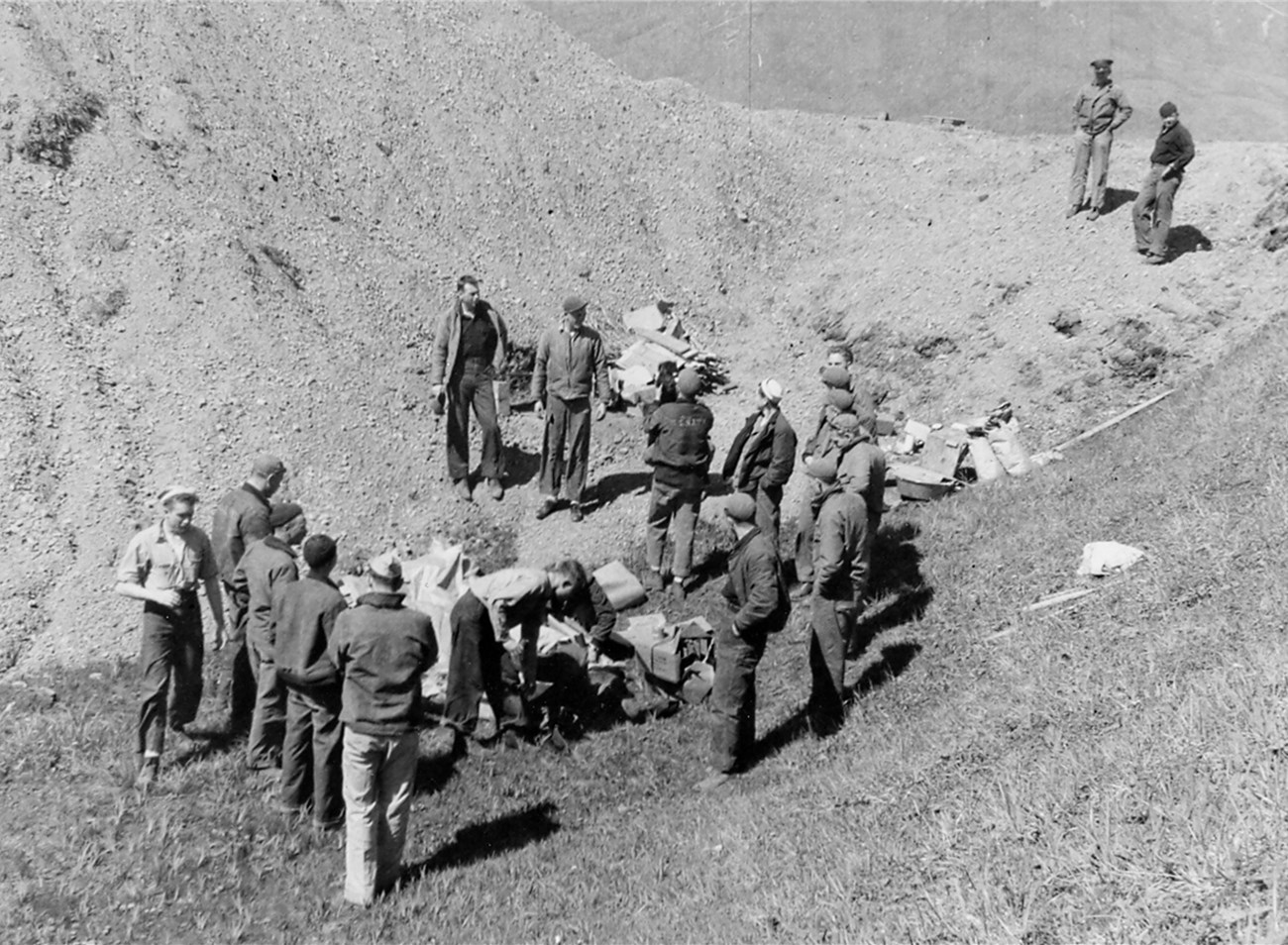
Courtesy Walter Andersen, Aerographer’s Mate, 2nd Class, US Navy, Circa 1943-1945. On June 7, 1942, the Japanese invaded the island of Kiska. The men of the Kiska Aerological Unit (pictured below) were the only people on the island during the time of the invasion. The men of this unit fled to the hills, but most of them were captured within a week. Only Senior Petty Officer Charles House managed to remain at large for 50 days. 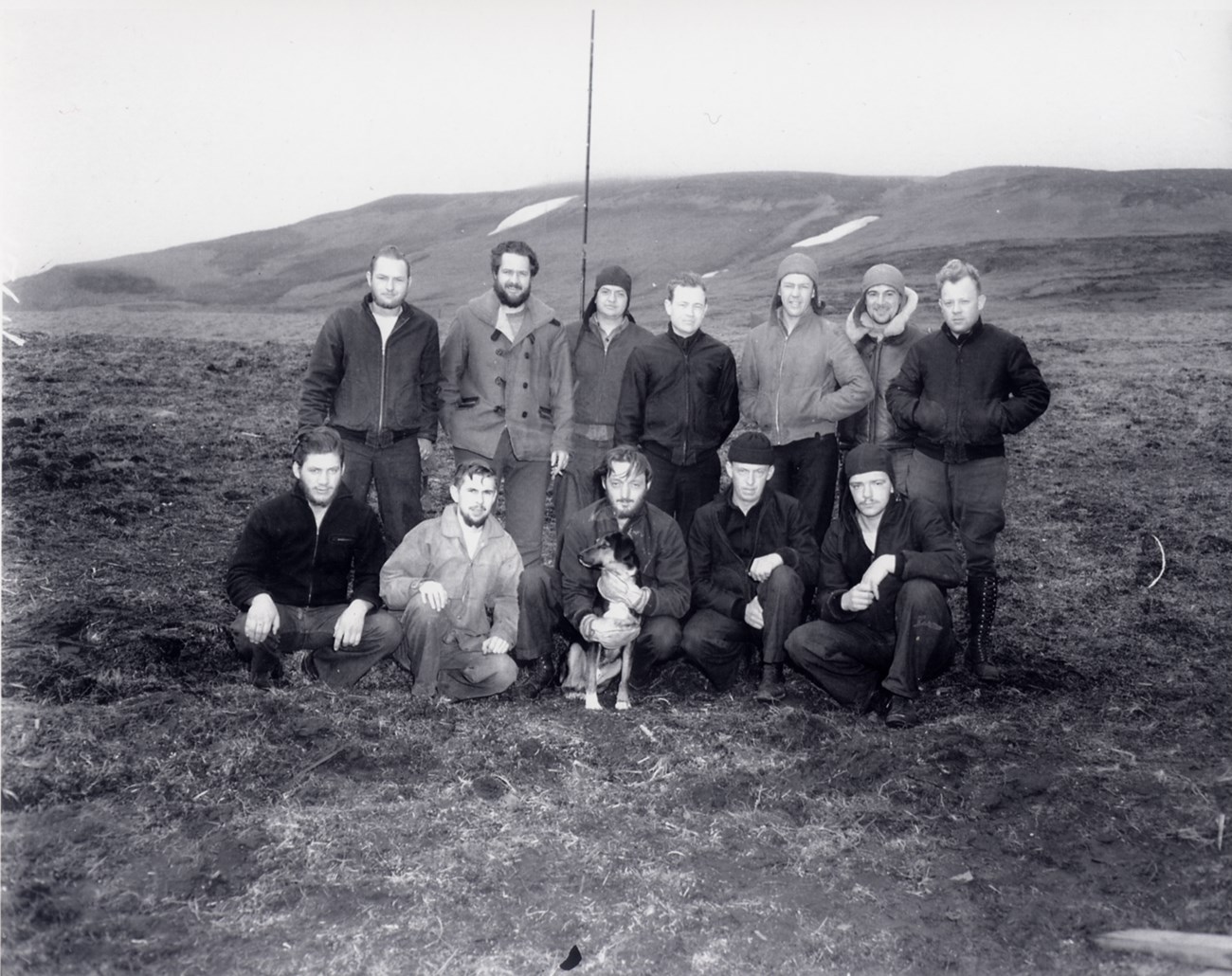
Courtesy Ralph Carrigan, brother of Paul E. Carrigan, Aerographer’s Mate 2nd Class, US Navy, Circa 1942-1943. "By June 6, 1942, we figured the Japanese were well past Kiska ... Just after 0200 hours on June 7, 1942, Winfrey AG3 sleeping in the bunk above me shouted, 'Attack, attack!' I told him to go back to bed, it is not time to get up, and that he was having a bad dream. Wimpy then turned on the lights and showed me the bullet hole in his leg. About that time I observed window glass in our bunk room being broken by bullets ... Turner turned the heating stove up full, and I stuffed all the communication ciphers into the hot stove ... As I ran from the building the first light permitted the observation of many Japanese landing craft moving up the inner harbor with machine guns blasting from their bows." Charles House, Aerographer's Mate
|
Last updated: April 14, 2015
